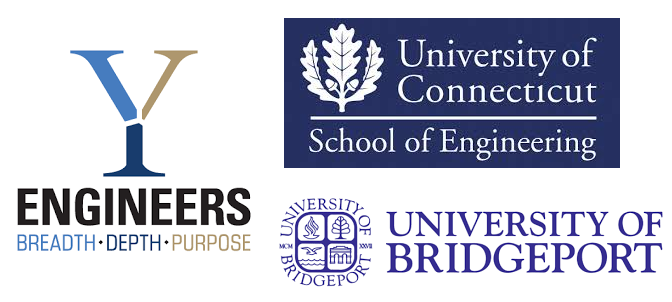This article features top engineering colleges in Connecticut that offer master and doctoral degrees in the fields of biological engineering, chemical engineering, computer science, materials engineering, mechanical engineering, etc. Please be informed that each school receives national wide rank as the ranking compares all engineering schools in the United States. Some important ranking factors include average GRE scores, alumni surveys, current student interviews, institutional research publications, and peer college assessment. In the following list of best engineering schools in the state of Connecticut, you can see tuition cost for both in-state and out-of-state students, acceptable rates and admissions statistics for each top ranked engineering college.

| National Ranking | Connecticut Top Engineering Programs |
| 34 | Yale University (New Haven, CT) Overall acceptance rate: 14.6% Average GRE quantitative score (master’s and Ph.D. students): 800 Tuition: Full-time: $34,500 per year Total graduate engineering enrollment: 216 Research expenditures per faculty member: $497,732 Engineering school research expenditures (2010-2011 fiscal year): $25,882,094 Faculty membership in National Academy of Engineering: 12.0% |
| 65 | University of Connecticut (Storrs, CT) Overall acceptance rate: 27.2% Average GRE quantitative score (master’s and Ph.D. students): 756 Tuition: In-state, full-time: $10,224 per year, Out-of-state, full-time: $26,532 per year Total graduate engineering enrollment: 745 Research expenditures per faculty member: $333,992 Engineering school research expenditures (2010-2011 fiscal year): $41,749,000 Faculty membership in National Academy of Engineering: 1.6% |
| 177 | University of Bridgeport (Bridgeport, CT) Overall acceptance rate: 67.4% Average GRE quantitative score (master’s and Ph.D. students): N/A Tuition: Full-time: $700 per credit Total graduate engineering enrollment: 670 Research expenditures per faculty member: $8,726 Engineering school research expenditures (2010-2011 fiscal year): $174,521 Faculty membership in National Academy of Engineering: 0.0% |
Ivy League
The Ivy League are eight private universities and colleges in the Northeastern United States that are considered the most prestigious universities in the United States of America (and one of the most prestigious in the world).
Although officially there is only a collegiate sports league with that name, the Ivy League very often refers to educational institutions. This name appeared in the 1930s in articles by sports journalists, and its origin was the idea that all league universities are so old that all their buildings are covered with ivy.
Universities of the Ivy League are also called the “Ancient Eight”, because it includes the oldest universities in the United States. Seven of the eight Ivy League schools were founded before the independence of the United States.
| Ivy League universities | |||
| University (college) | Year of foundation | Location | Sports team emblem |
| Harvard University (Harvard, Harvard University) | 1636 | Cambridge, Massachusetts | |
| Yale University (Yale, Yale University) | 1701 | New Haven, Connecticut | |
| University of Pennsylvania (Penn, University of Pennsylvania) | 1740 | Philadelphia, Pennsylvania | |
| Princeton University (Princeton, Princeton University) | 1746 | Princeton, New Jersey | |
| Columbia University (Columbia, Columbia University) | 1754 | New York, New York | |
| Brown University (Brown, Brown University) | 1764 | Providence, Rhode Island | |
| Dartmouth College (Dartmouth, Dartmouth College) | 1769 | Hanover, New Hampshire | |
| Cornell University (Cornell, Cornell University) | 1865 | Ithaca, New York | |
There is a fairly widespread opinion about the elitism and even snobbery of Ivy League universities and, accordingly, their graduates. Indeed, in almost all existing models of the division of the US population into social classes, it is understood that in order to belong to the upper strata of society, it is necessary to get an education in one of the Ivy League universities.
At the beginning of the 20th century, it was believed that only representatives of the WASP could study in the ” League ” . At the same time, Cornell University was one of the first universities in the United States to abandon racial and gender discrimination in student admissions.
Many of the Presidents of the United States are alumni of Ivy League universities, including George W. Bush (Yale University), Bill Clinton (Yale University), George W. Bush (Yale and Harvard Universities), Barack Obama (Columbia and Harvard Universities), Donald Trump (University of Pennsylvania) and others.
